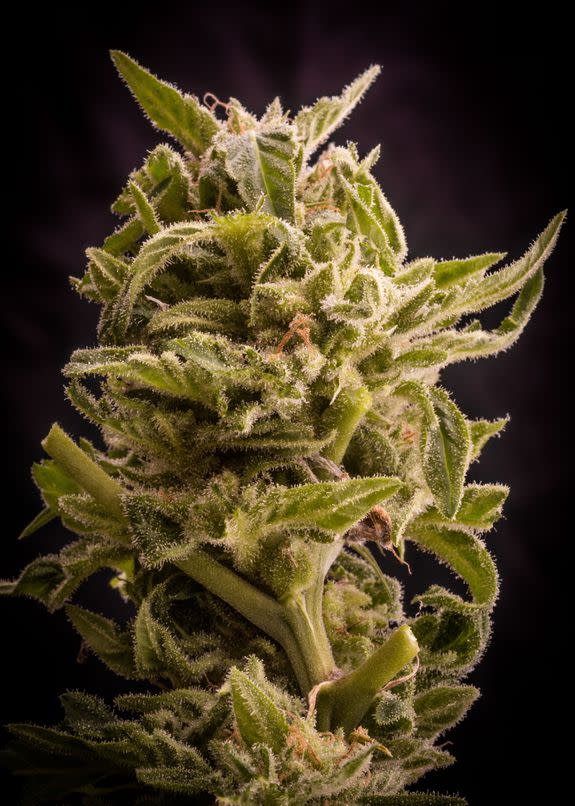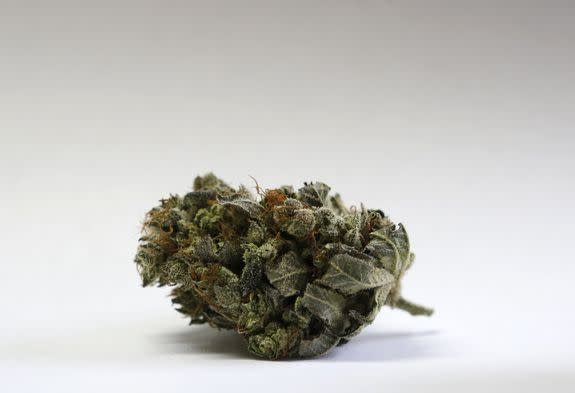The U.S. government grows some seriously garbage weed for research

In the age of stickiest-of-ickiest-and-rising THC percentages, it appears the United States government still supplies researchers with low grade brick weed you probably smoked in high school. Actually, it's worse than the weed you smoked in high school.
According to reports from PBS and the Washington Post, all marijuana used in research must be supplied by the federal government, and the pot that the government has been handing out looks like trash.
Government marijuana looks nothing like the real stuff. See for yourself. https://t.co/UKNSYwqPWQ pic.twitter.com/IbQv8p5NWu
— Washington Post (@washingtonpost) March 13, 2017
Though it's relatively simple to grow, the quality of cannabis you can purchase (legally or illegally) in the United States can vary greatly. Lighting, air quality, humidity and pests can all play a massive role in the end product, so growing weed may be pretty easy, but growing great weed can be pretty taxing.
As the Post points out, when researchers are testing the effects of marijuana, they need to test the real thing that people are actually growing, buying and consuming. But the cannabis being supplied to researchers currently is far from something you'd typically buy in a dispensary in Denver. Or getting from an illegal delivery service in New York City.

Image: Jon Santa Cruz/REX/Shutterstock
And while weed comes in plenty of colors, shapes, densities and sizes, the pot analyzed by PBS and the Post looks extremely yellow and filled with stems.
Sue Sisley, a researcher with MAPS studying the medical effects of marijuana on U.S. veterans suffering from PTSD told PBS the weed supplied to them for the study doesn't even smell like weed.
“It doesn’t resemble cannabis. It doesn’t smell like cannabis," she said.
Not only is the weed bad, but Sisley claims it was moldy as well. So the government clearly doesn't have it together when it comes to growing pot.
All of the cannabis provided for medical research comes from a 12-acre farm located at the University of Mississippi. The farm is run by the National Institute on Drug Abuse (NIDA), and is the only facility licensed by the DEA to grow pot for research, since marijuana remains a schedule 1 drug to the DEA. (It's classified in a category with heroin and ecstasy, which also makes a lot of sense.)
Rick Doblin, MAPS’ director, blasted NIDA's capabilities by telling PBS, “They’re in no way capable of assuming the rights and responsibilities for handling a drug that we’re hoping to be approved by the FDA as prescription medicine. ”

Image: F. Bukaty/AP/REX/Shutterstock
When confronted about the mold and potency, NIDA and the University of Mississippi told PBS that neither test the samples for mold before they're shipped.
Sisely had the samples provided by the government tested by an independent lab in Colorado as a part of typical protocol. There they found high levels of total yeast and mold in some samples, as well as potency that didn't match what they had ordered. One sample was supposed to contain 13 percent THC — it reportedly had just 8 percent.
Shockingly, 13 percent THC is the highest percentage NIDA offers. In Colorado you can walk into a dispensary and buy weed that is easily 20 percent, sometimes upwards of 30 percent.
NIDA blamed the mold problem on the lab, saying they didn't handle it properly when they left it in a refrigerator for two days instead of freezing it. MAPS fired back, saying the weed with elevated total yeast and mold counts "were found in samples that never left the freezer before testing," according to PBS.
While it was determined the mold variety in the cannabis was not harmful to adults, it's clear that the United States needs to form better quality control and standards testing for cannabis, be it medical, recreational or for research. Regardless of how you feel about marijuana, the effects of the plant deserve to be properly researched, and right now, it appears they aren't.
Though there way may be hope on the horizon: The DEA announced in the summer that it would start to allow other bulk growers the ability to provide cannabis for medical research, though none have yet been approved.
WATCH: Trump is president, but at least you can get high in four more states
